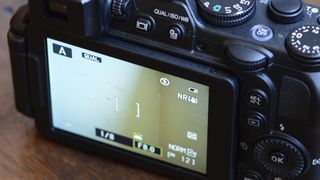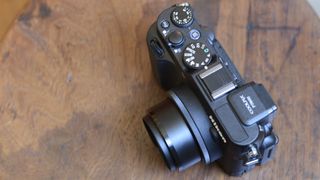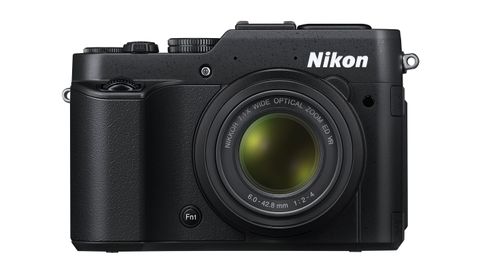Why you can trust TechRadar
The Nikon P series of cameras has proven itself to be very capable in the past, and the P7800 builds on that, producing images which are nice and vibrant, without displaying too much saturation. You can alter the colour profiles by using the Custom Picture Control, which is useful if you want to photograph something vivid, or you want a more neutral palette. You've also got the option for monochrome here.
Although a relatively low resolution in comparison to some of the other cameras on the market, the 12.1 million-pixel sensor is never-the-less capable of producing finely detailed images. If you examine at 100%, you will notice some elements of image smoothing throughout the sensitivity range, but nothing which is particularly noticeable at normal printing and sharing sizes. In low light conditions, shooting at high sensitivities such as ISO 1600 and ISO 3200 produces images which are very good.
Images taken at ISO 1600 display some image smoothing as you'd expect, but detail is still maintained reasonably well while noise is well controlled. It becomes a lot more noticeable at ISO 3200, but even then, sharing and printing at standard sizes is still possible, and certainly better than not getting the shot, or getting a blurry shot. There's also a Hi1 setting, which is only really used a last resort if you really can't get the shot, but it's still a little useable.

Matrix metering (sometimes known as general purpose) does a good job of producing accurate exposures, even when shooting higher contrast scenes. If you're finding that the camera is struggling, it can be beneficial to switch to spot metering, but you may find you don't need to do this particularly often. Automatic white balance, meanwhile, does an excellent job, even under artificial lighting conditions, perhaps erring slightly towards a warm tone, but overall the effect is very pleasing. You can switch to a specific white balance if you're looking for complete accuracy.
Faster
Nikon is boasting about the speeds of the P7800, and in practice it does seem much faster and easier to work with than its predecessor, the P7700. Start-up time is pretty quick, being ready to shoot in just a couple of seconds, making it useful for street photography or catching fleeting moments. One of the biggest problems we had with the P7700 was shot-to-shot times, which made using the camera painfully slow. Nikon seems to have rectified this with the P7800, making it a more fluid process.
Autofocus speeds are generally pretty snappy, although drop slightly in lower light. You can activate macro focusing via the four-way navigational pad, and this allows you to get very close to a subject, in fact the lens can be almost touching it and it will still focus, which is pretty impressive and useful for producing frame filling close-ups.
This gives the camera the edge over one of its competitors, the Sony RX100 II, which struggles slightly with shooting at very close ranges.

Shooting at a mid-range aperture, such as f/8, allows us to analyse the sharpness of the lens. We've found that the P7800 is capable of producing images which are pretty sharp across the scene, only displaying some softness in the very corners.
One advantage the P7800 has over the Sony RX100 II and the Canon G16 is its optical zoom capability, which at 7.1x offers significantly more than its rivals. This makes it more enticing to travelling photographers, or those looking for a little more flexibility. Images shot at the far end of the telephoto zoom range are very sharp, with image stablisation doing an excellent job of keeping image blur to a minimum. There's also a digital zoom if you need to get even closer. This is effectively a crop of the full resolution image, and as such the quality does drop, but it's very good if you do need it. Bear in mind that you will need to switch off raw format shooting if you want to activate digital zoom.
There are a number of digital filters which you can shoot with, by switching to the Effects mode on the mode dial. Some of the filters are better than others, as you might expect, but it's worth experimenting with them to see if you like them. Again, you won't be able to use them while shooting in raw format.
Current page: Performance
Prev Page Build quality and handling Next Page Image quality and resolutionAmy has been writing about cameras, photography and associated tech since 2009. Amy was once part of the photography testing team for Future Publishing working across TechRadar, Digital Camera, PhotoPlus, N Photo and Photography Week. For her photography, she has won awards and has been exhibited. She often partakes in unusual projects - including one intense year where she used a different camera every single day. Amy is currently the Features Editor at Amateur Photographer magazine, and in her increasingly little spare time works across a number of high-profile publications including Wired, Stuff, Digital Camera World, Expert Reviews, and just a little off-tangent, PetsRadar.


